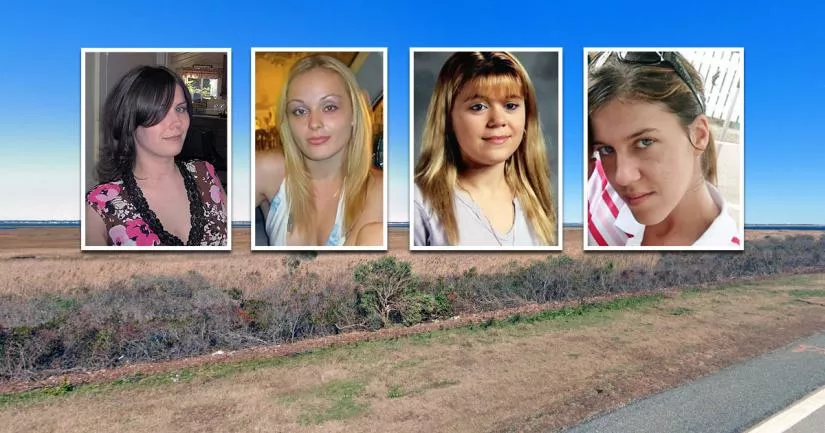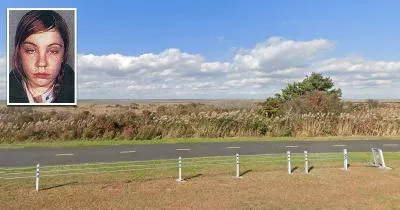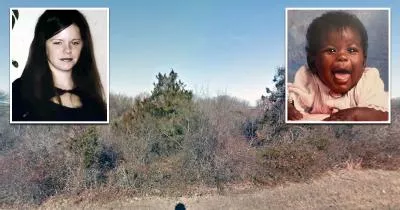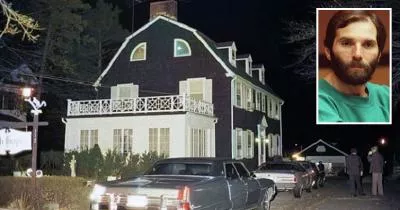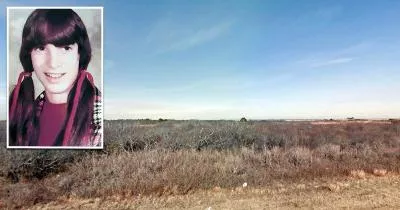The Gilgo Four site
This is the location where the Gilgo Four were found.
The site is situated beside Ocean Parkway on Jones Beach Island on Long Island, New York. The exact coordinates are available in our Location section below.
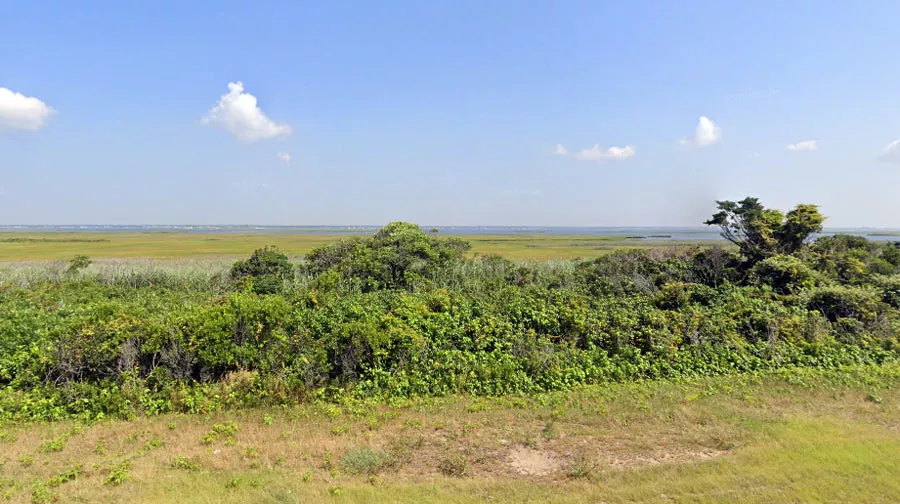
The discovery
On May 1, 2010, a sex worker named Shannan Gilbert disappeared after she inexplicably ran away from a client's house in Oak Beach.
When a month passed and she failed to show up, the Suffolk County Police Department sent canine officer John Mallia and his cadaver dog, Blue, to search the area.
For more than six months, the pair persistently searched through fields, swamps, and overgrown terrain. However, they found nothing of note.
After failing to locate Gilbert, Mallia decided to branch out and head further west along Jones Beach Island.
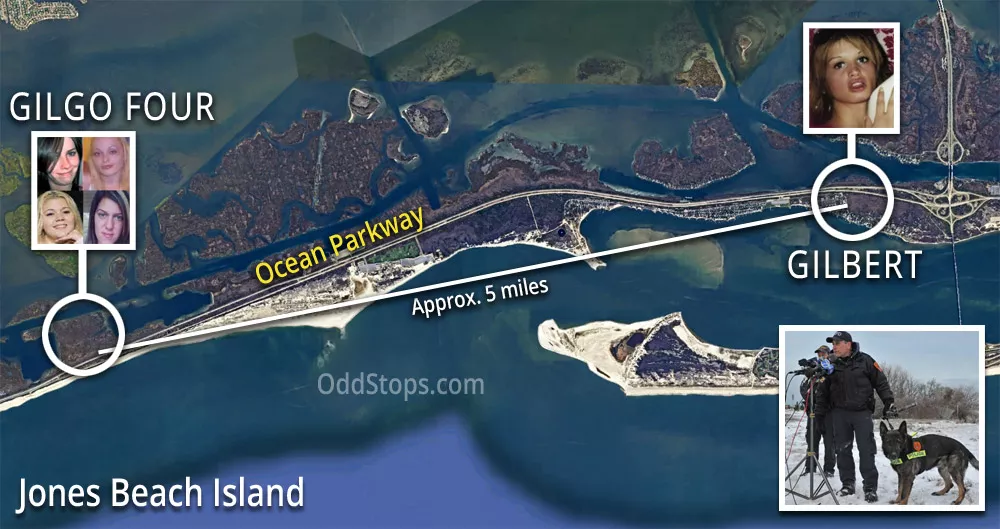
Mallia was aware that many killers dump their victims relatively close to the roadside, as he had previously read about the topic in an FBI report. With that in mind, he began to focus his search efforts on the sides of the highway.
On Saturday, December 11, 2010, he was walking along the shoulder at this section of Ocean Parkway when Blue suddenly stopped and began to adjust his head toward the bushes.
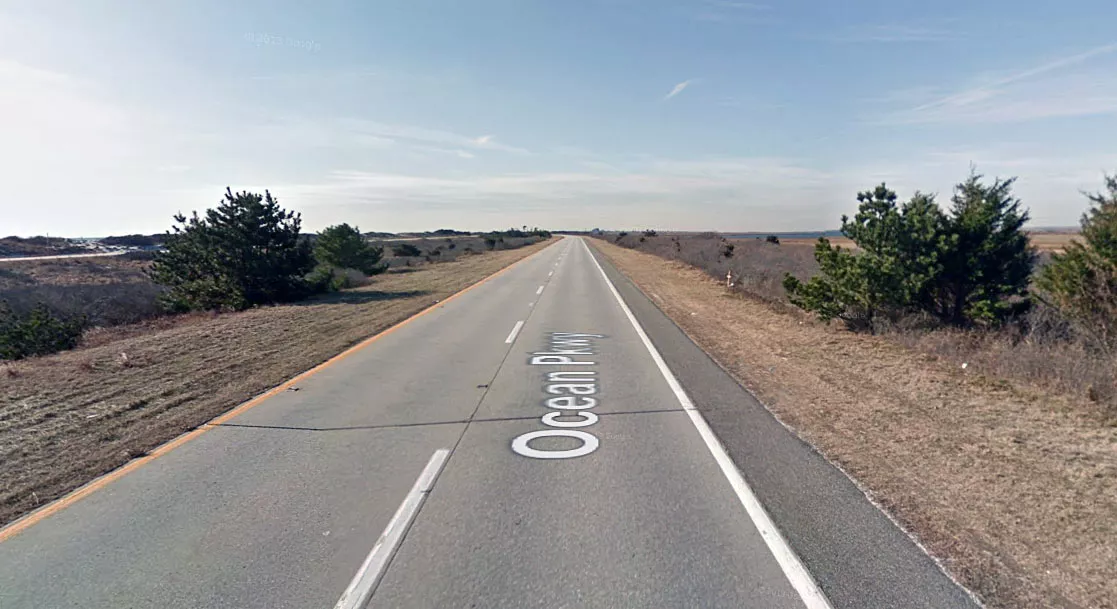
Realizing that the dog had picked up on something, Mallia made his way across the grass and carefully pushed his way into the thick brambles by the side of the road.
It did not take long for him to locate the source of the scent.
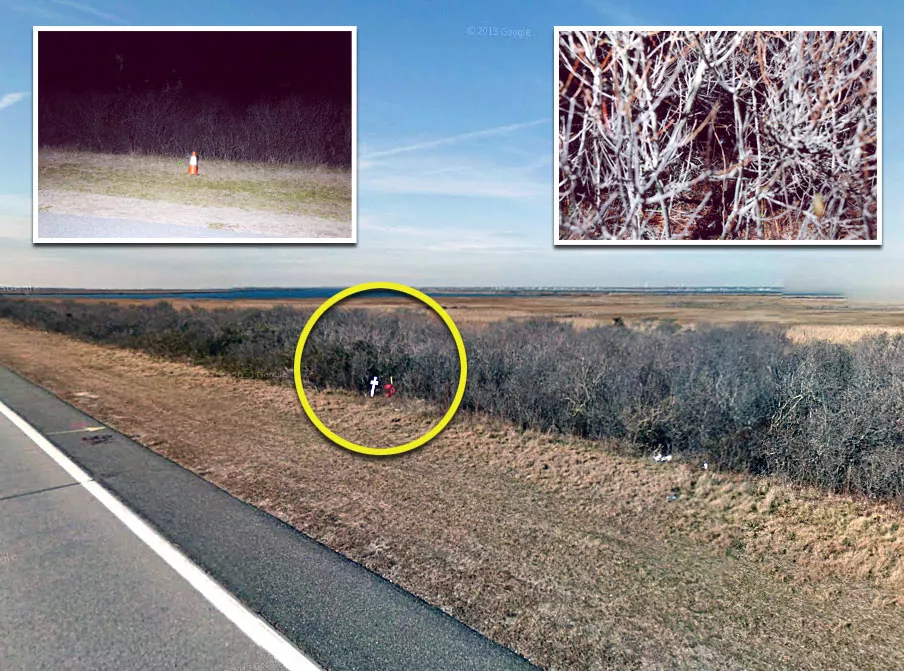
Just a few feet inside the bushes, he saw a skeleton that had tape wrapped around its head, torso, and legs. The adhesive side of the tape indicated the victim had been wrapped in a burlap material that had since decayed.
The Gilgo Four
Mallia initially believed that he had finally located Gilbert. However, there was just one problem.
Gilbert had a titanium plate in her jaw. This skeleton did not.
Following Mallia's discovery, a recovery team was called in to comb the area for evidence. During their investigation of the site, they discovered the remains of three more victims.
Three of the four women had been wrapped in duck-blind camouflage burlap. Due to the location of the remains and the distinctive method of disposal, it didn't take long for the authorities to realize that they were dealing with a serial killer.
The victims were soon identified as Maureen Brainard-Barnes (25), Melissa Barthelemy (24), Megan Waterman (22), and Amber Lynn Costello (27).
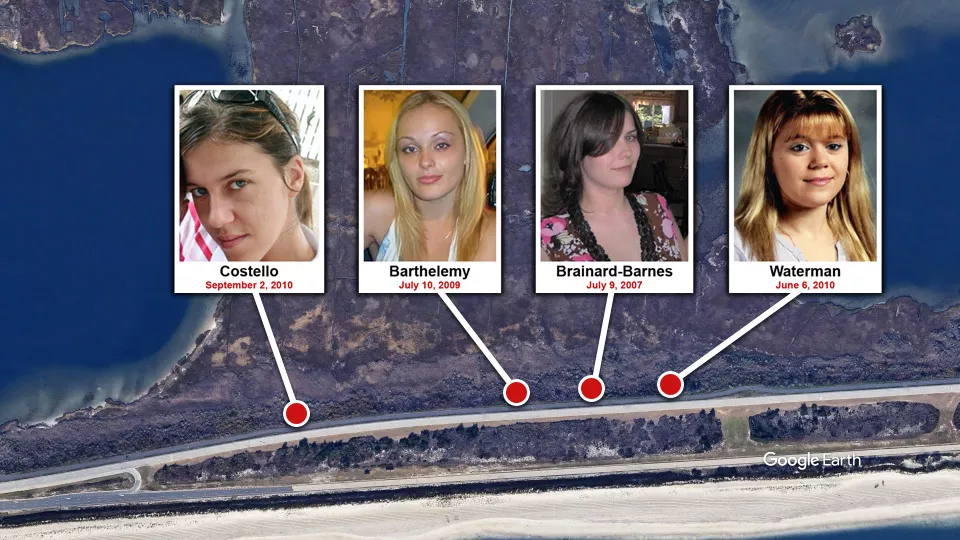
The women, who have since become known as the Gilgo Four, were all sex workers who had previously advertised their services on websites such as Craigslist and Backpage.

In the months that followed, the police broadened their search of the area and discovered six more victims at multiple sites along Ocean Parkway.
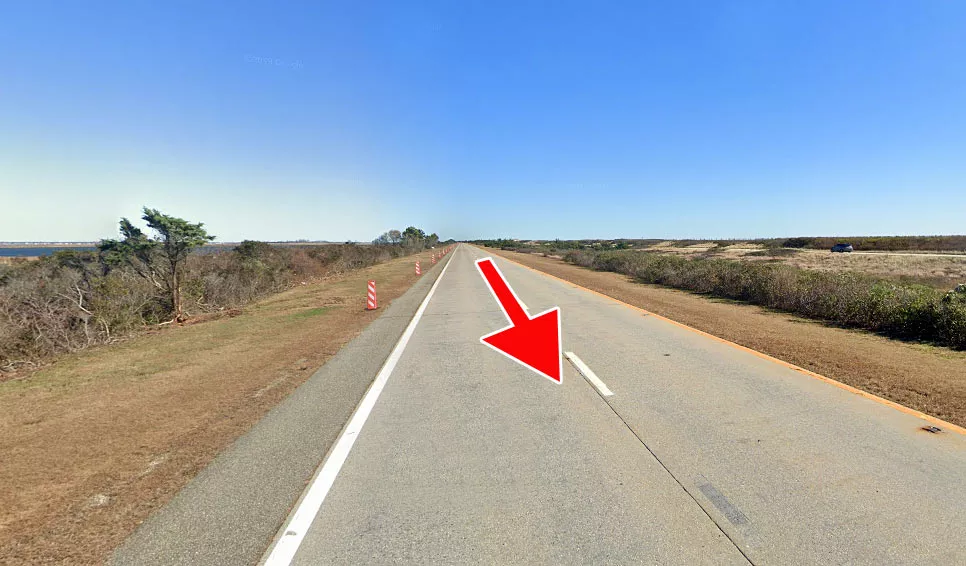
Once the dust had settled, it became apparent that an unidentified killer had been using the area around Gilgo Beach as a dumping ground since 1996.
Location
The address and GPS coordinates for the site are as follows:
Address
Ocean Parkway, Gilgo Beach, New York, NY 11702, USA
GPS Coordinates
40.624692, -73.375849
40°37'28.89"N 73°22'33.06"W
Get Directions
Open this location in your preferred maps app:
Area Information
Jones Beach Island is an outer barrier island on the southern coast of Long Island. It lies between Long Beach and Fire Island.
📍 The coordinates above will lead you to the location where police discovered the remains of the Gilgo Four. The locations of the other dump sites are listed below.
Photos
Photos of the site and other related images.
Gilgo Beach map
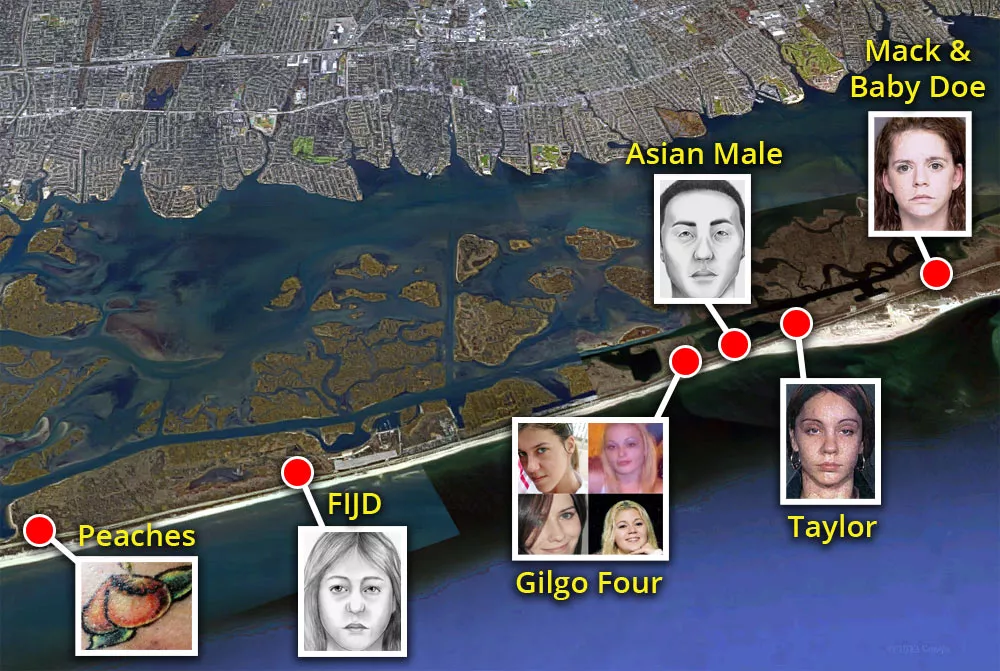
This aerial map of the area around Gilgo Beach pinpoints the six dump sites that were discovered along Ocean Parkway.
His decision to dump the remains next to the highway is consistent with the behavior of other killers.
Carrying human remains across an uneven terrain that contains thick vegetation would be physically taxing. Furthermore, the perpetrator will typically try to minimize the amount of time that he spends at the dump site. The longer he stays, the more likely it is that a passerby will spot him or his vehicle.
It is probable that the Long Island serial killer lives relatively close to this location. Either that, or he has visited the area on multiple occasions.
Serial killers typically operate within "comfort zones", which are places that they feel somewhat familiar with.
From their perspective, using an unfamiliar area to dump human remains is risky because it introduces far too many unknown variables.
The Gilgo Four
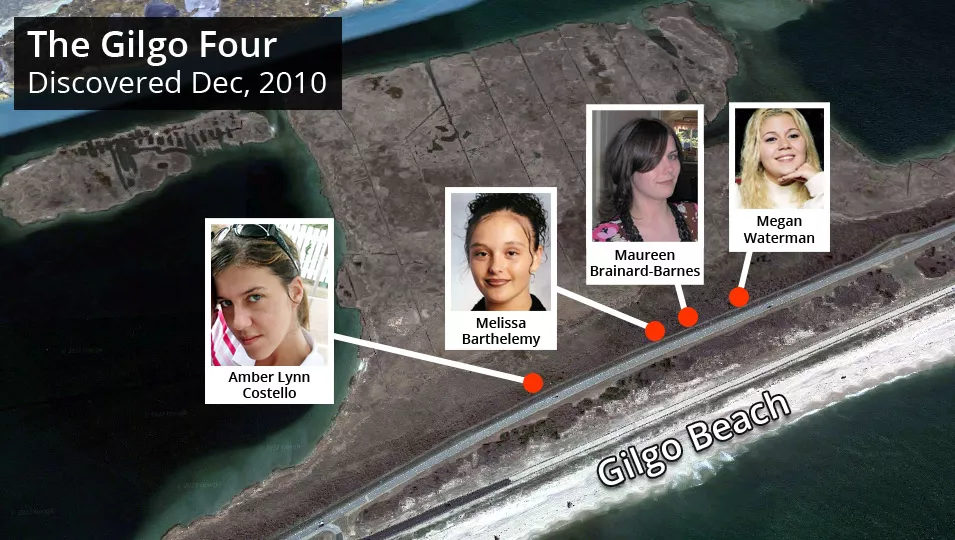
The term "Gilgo Four" refers to four women who went missing between 2007 and 2010. They were nicknamed as such due to their proximity to each other and Gilgo Beach, which is on the opposite side of Ocean Parkway.
The victims had been asphyxiated. There were also signs that they had been kept for a while and possibly tortured.
Although these were the first victims to be found, they were not the first to go missing. In fact, this was his "freshest" site, so to speak.
One of the victims, Amber Lynn Costello, went missing in September 2010, which was only two months before Officer Mallia uncovered the first skeleton.
This means that the killer had been using the site right up until its discovery.
His decision to dump the remains of four victims in the exact same area seems to be a deviation from his earlier behavior.
Originally, he kept his dump sites apart, as it lowered the chances of multiple victims being found at the same time.
However, in the late 2000s, he had essentially run out of space and couldn't progress further west without increasing his exposure (the median strip narrows).
The first victim to be placed at this site was 25-year-old Maureen Brainard-Barnes, who disappeared on July 9, 2007, after meeting a client outside her motel in Manhattan.
The second victim to be dumped here was 24-year-old Craigslist escort Melissa Barthelemy, who was last seen on July 10, 2009. In the weeks following Barthelemy's disappearance, an unidentified man used her cellphone to make a series of taunting calls to her younger sister, Amanda. In one of these calls, the man stated that Barthelemy was dead and that he was going to "watch her rot."
All of these phone calls were intentionally short and made from crowded areas in Manhattan.
Asian Doe
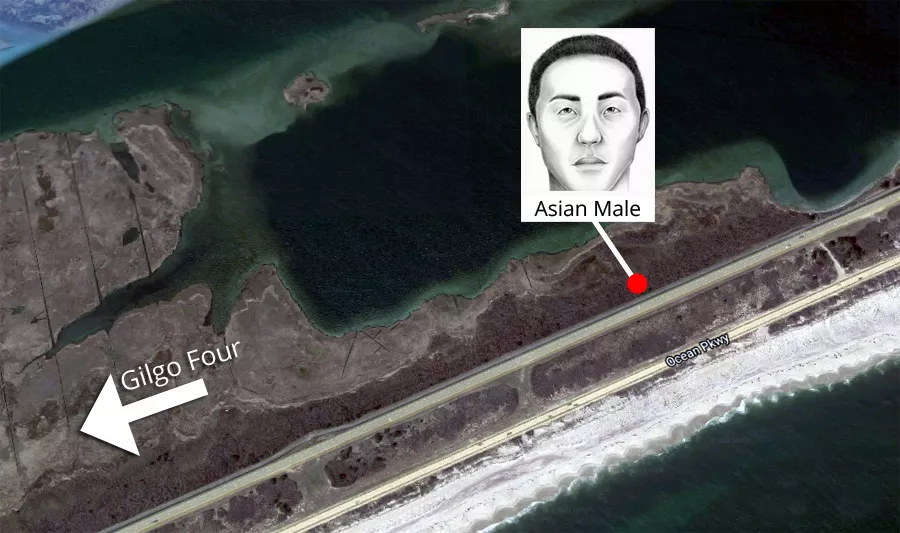
On April 4, 2011, a police recovery team discovered the skeletal remains of an unidentified Asian male at a site that was roughly 750 yards east of the Gilgo Four.
The authorities believe that "Asian Doe" died between 2001 and 2006.
There is speculation that the victim may have been transgender, as they were found wearing women's clothes.
Jessica Taylor
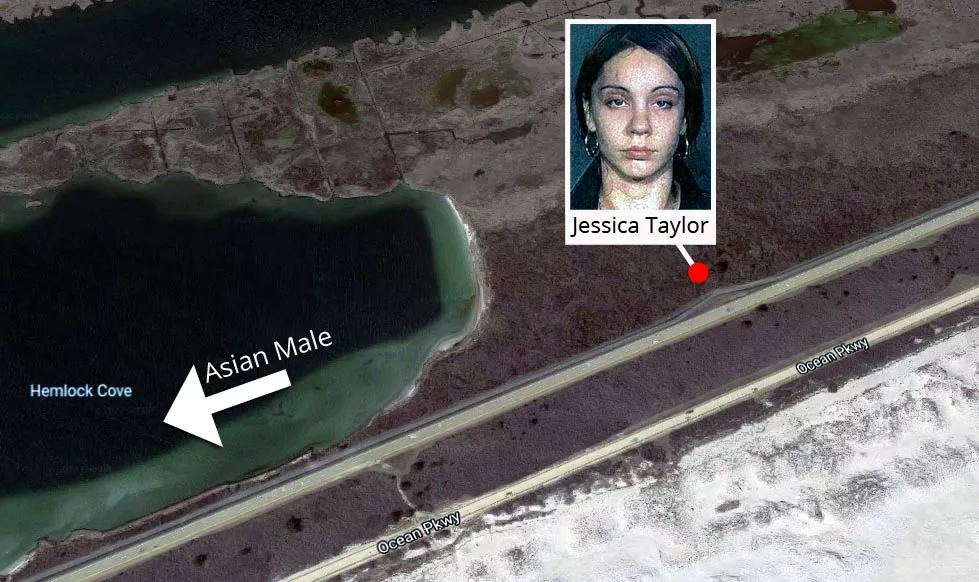
On March 29, 2011, investigators discovered a skull and two hands in this area off Ocean Parkway. The killer had deposited the remains about 1,100 yards east of the site where the "Asian Male" was found.
DNA tests proved that the remains belonged to a sex worker named Jessica Taylor, whose torso was found at the end of an access road in Manorville in July 2003.
In Taylor's case, it seems as though LISK went to great lengths to try and conceal her identity. Not only did he dismember her body and dump her remains in two separate places, he also attempted to remove a tattoo from her torso.
Valerie Mack and Tatiana Dykes
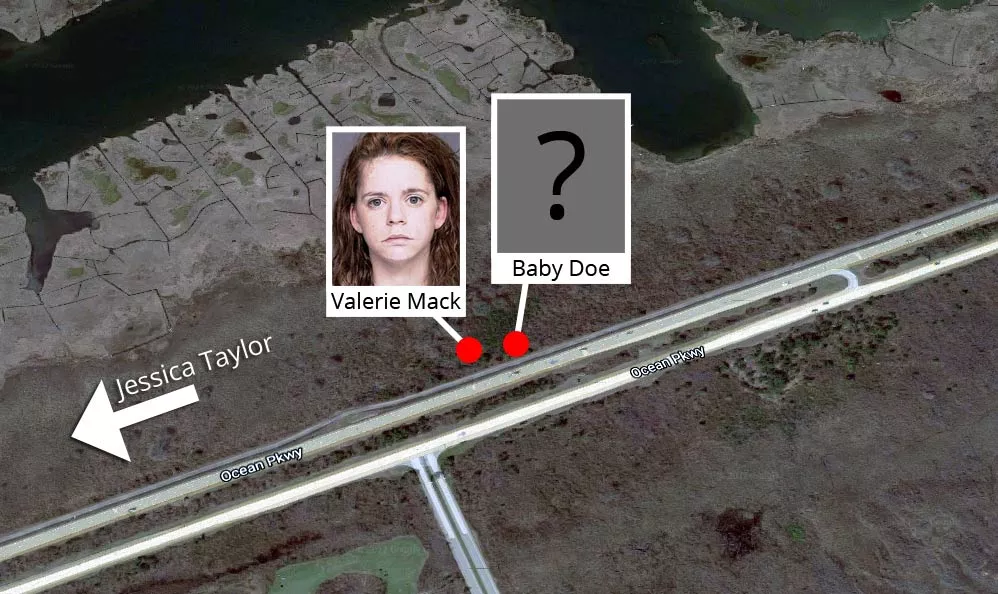
On April 4, 2011, the police discovered the partial remains of 20-year-old Valerie Mack and the skeleton of a female toddler at this site near Overlook Beach.
The area in question is about a mile and a half east of the location where LISK tossed Taylor's skull into the thicket.
Mack and the toddler were found just 250 feet apart. However, DNA testing confirmed that they were not related to each other.
Although Mack's skull, hands, and right foot were discovered at this site in 2011, her torso had already been found in a wooded area in Manorville eleven years prior.
The similarities between the cases of Mack and Taylor are striking. LISK dismembered the two women in the early 2000s and dumped their torsos near Halsey Manor Road in Manorville. He then tossed their skulls and hands into the bushes on the northern side of Ocean Parkway.
This was done to hinder their identification and impede the investigation into their murders.
If investigators do not know a victim's name, they cannot trace their last known whereabouts or interview potential witnesses.
In another twist, DNA testing revealed that the toddler belonged to an unidentified LISK victim called Peaches, whose torso was unceremoniously thrown into a wooded area in Hempstead Lake State Park in June 1997.
In April 2025, the authorities announced that they had identified Peaches and Baby Doe as Tanya Denise Jackson (26) and Tatiana Dykes (2).
Karen Vergata (Fire Island Jane Doe)
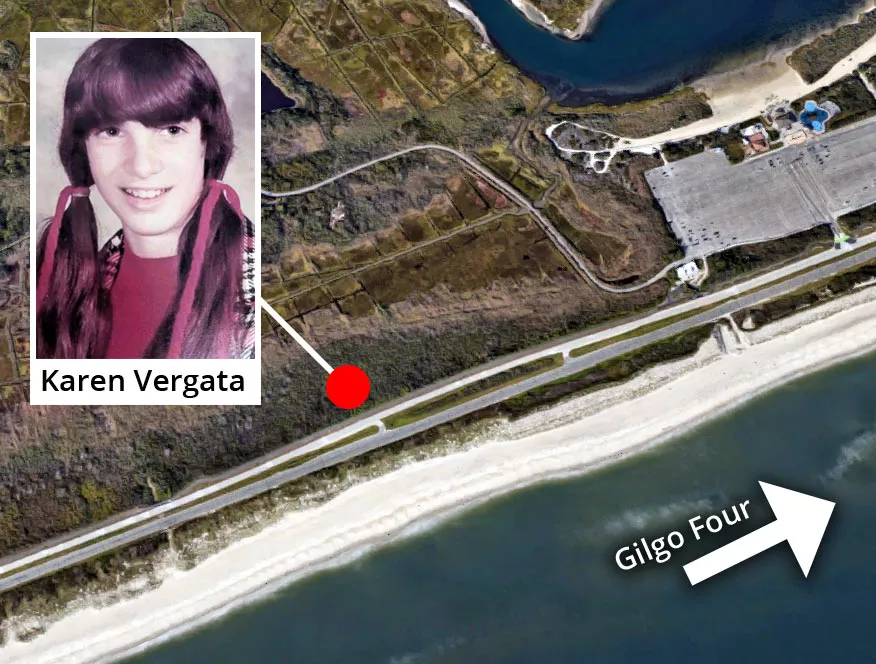
On April 11, 2011, the authorities discovered the skull of an unidentified woman at this site near Tobay Beach, roughly 3.5 miles west of the Gilgo Four.
DNA tests determined that it belonged to a woman whose legs had washed ashore on Fire Island in 1996.
The victim remained unidentified for 26 years, during which she was nicknamed Fire Island Jane Doe (FIJD). In October 2022, the FBI identified her as 34-year-old Karen Vergata.
However, her name wasn't released to the public until August 2023.
Tanya Jackson (Peaches)
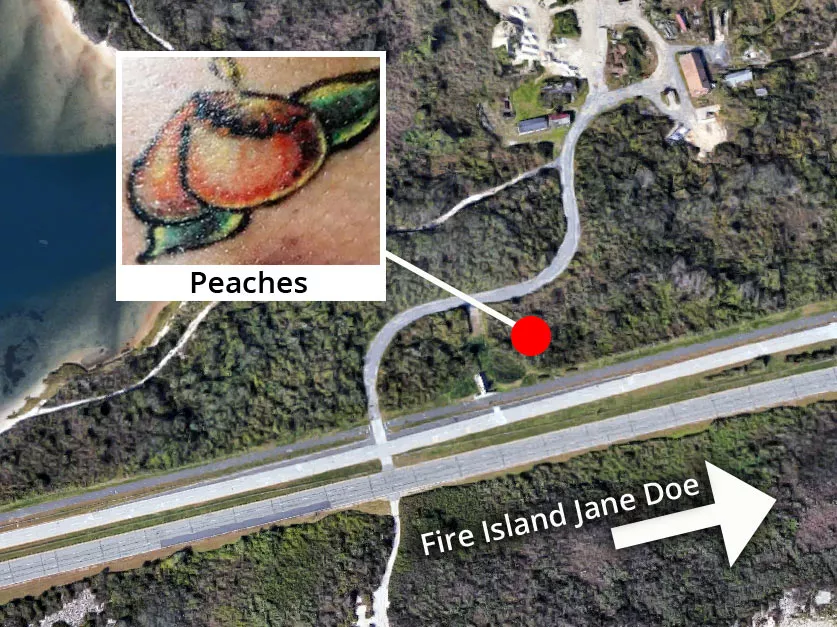
On April 11, 2011, the police discovered the arms and legs of an unidentified woman in this section of the thicket near Jones Beach State Park.
DNA analysis confirmed that the partial remains belonged to Peaches, who was the mother of "Baby Doe".
In April 2025, the Nassau County Police Department announced that they had identified Peaches as 26-year-old Tanya Denise Jackson.
Median strip
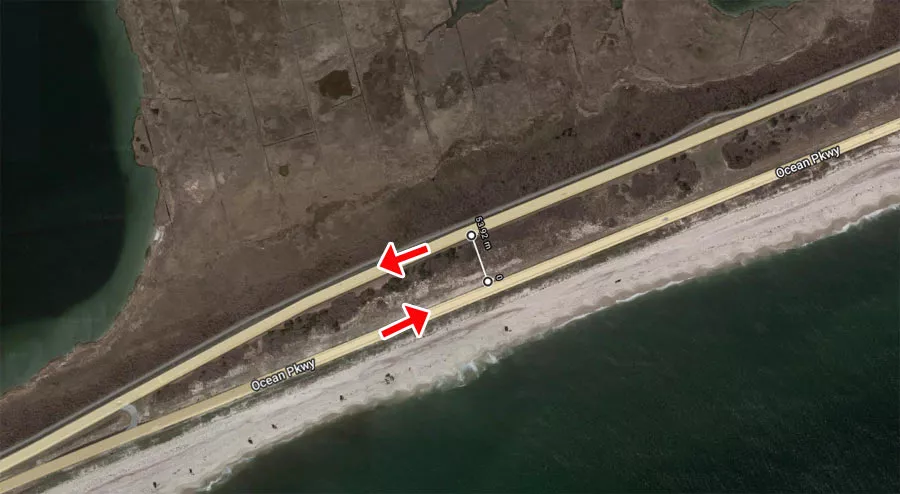
While dumping the Gilgo Four, it seems as though he deliberately stuck to the section of Ocean Parkway where the median strip between the two lanes is at its widest.
There was a 50-meter (55-yard) distance between him and motorists traveling in the opposite direction. The strip also contained trees and shrubbery.
If his headlights were off, it would have been extremely difficult to see him or his vehicle, as there were no streetlights in the area.
The median strip narrows to 6 meters if you drive slightly west of this location. This may explain why he decided to place the Gilgo Four in one area. If he had continued any further, he would have been exposing himself to oncoming traffic.
Timeline
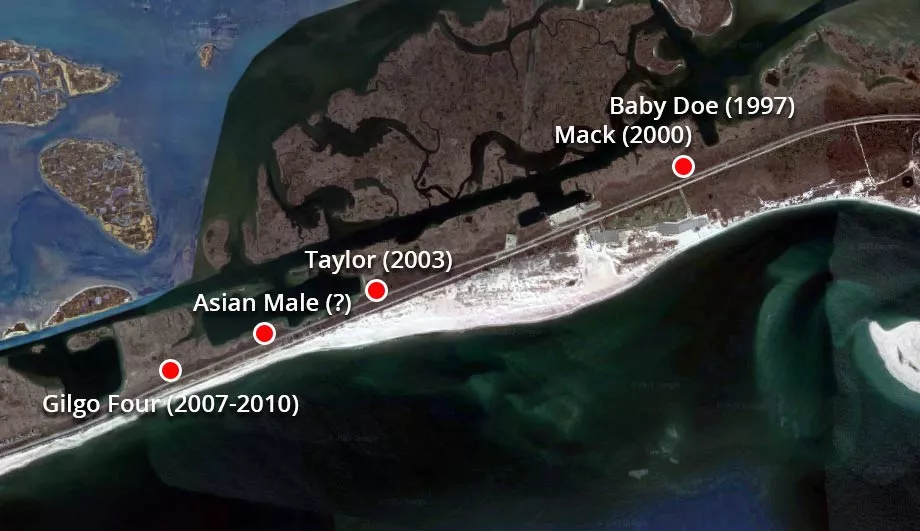
If you compare the locations with the dates that the victims went missing, a pattern seems to emerge.
Following the murder of Peaches and Baby Doe, he started on the eastern side of the island and then worked his way west, spacing his victims out along the way.
However, by the late 2000s, he was hesitant to continue any further. The narrowing of the median strip and the presence of houses left him with no other option but to stick with the one stretch of road that provided him with privacy.
This "pattern" is also interesting because it suggests that the unidentified victim, "Asian Male", may have gone missing between 2004 and 2006 (the police believe that he was murdered at some point between 2000 and 2005).
From what we know, there is only one example of the Long Island serial killer striking more than once in the same year (Waterman and Costello in 2010, at the very end of his spree).
If this east-to-west pattern isn't a coincidence and he was spacing out his dump sites, then it would mean that "Asian Male" disappeared at some point between the murders of Jessica Taylor (2003) and Maureen Brainard-Barnes (2007).
Note that there probably weren't any symbolic reasons for this. Instead, it is likely that he was just trying to prevent all of his victims from being found at the same time.
However, by 2007, he had run out of options. It is also possible that he was becoming more complacent.
LISK couldn't progress further west along Ocean Parkway
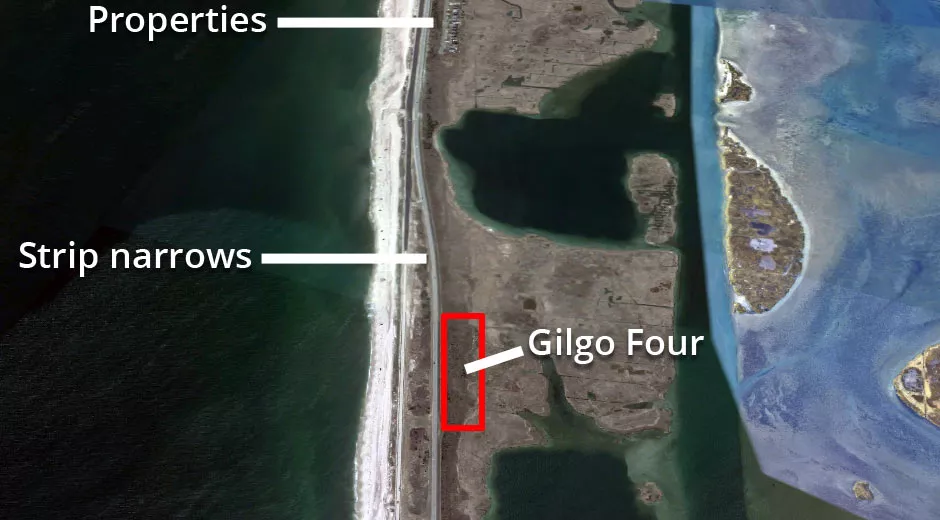
This west-facing aerial image illustrates why the killer was hesitant to progress further west.
As you can see, the median strip on Ocean Parkway narrows. This would have exposed him to traffic heading eastward. There were also a number of residential properties up ahead.
Poison ivy
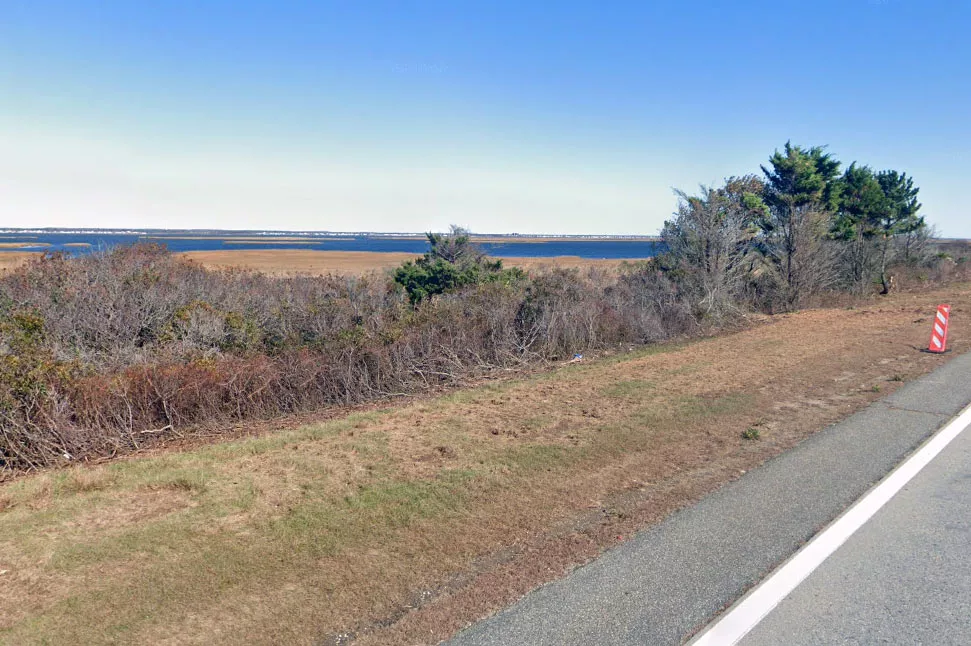
The thicket along Ocean Parkway is filled with brambles and poison ivy.
For this reason, a former FBI profiler opined that the Long Island serial killer may have sought medical treatment for poison ivy.
However, people have different reactions to the plant. For example, 15-25% of the population is resistant to any reaction, while others may experience only mild symptoms.
This location belongs to the following categories:
Crime Scenes Serial Killers Gilgo Beach Killings LocationsClosest Locations
Other locations that are relatively close to this address:
The site where Jessica Taylor's identifying remains were found
Roughly one mile away.
Crime Location in Gilgo Beach, New York
The site where Valerie Mack and Tatiana Dykes were found
Roughly 3 miles away.
Crime Location in Babylon, New York
The location where Karen Vergata's skull was found
Roughly 4 miles away.
Crime Location in Massapequa, New York
